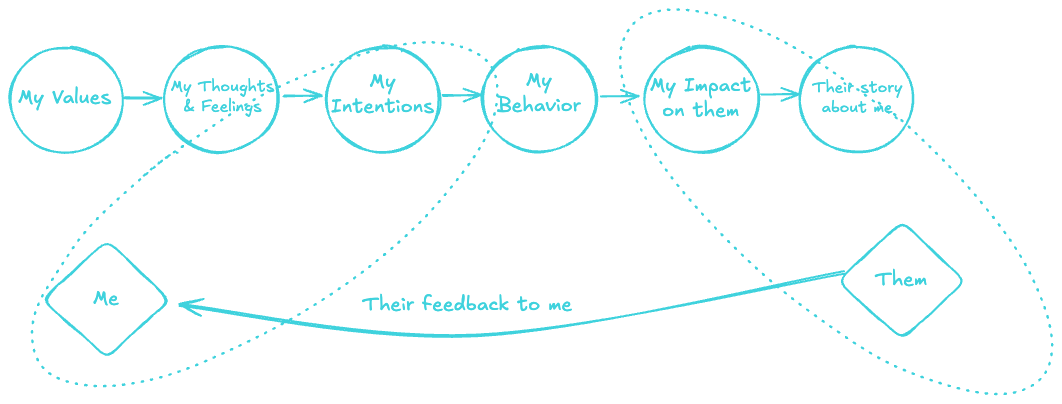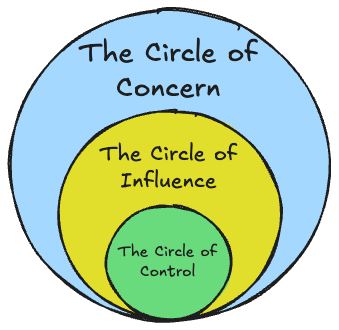How many times has someone asked you, “What do you mean?” How many times did you think you described everything clearly, but it turned out that you couldn’t and had to take a different way to explain it?
How many times have you supposed everyone feels how nervous you are when you’re speaking to a group but they actually had no clue in the end? How many times did you think everybody saw how stressful you were before that meeting?
Those were the moments where you firsthand experienced the illusion of transparency. Until someone loudly asked you to rephrase what you said, you thought your sentences all made sense. Yet, they didn’t. Until somebody told you that you nailed the presentation and looked very calm, you thought everyone heard your inner voice and understood your nervousness. Yet, nobody had a clue.
When we talk, we think that everyone understands what we think, how we feel and what we intend. We feel all the spotlights on us, making our inner thoughts, feelings, and struggles clear as a day, and everyone grasps every word we say.
The gap between our subjective experience and how others perceive our thoughts and interpret our emotions is called the illusion of transparency. It’s the distance between our internal world and how people around us perceive it.
Understanding the illusion of transparency and the size of that gap determines our ability to navigate otherwise challenging situations. It’s beneficial at work and in our relationships. Acknowledging others who don’t have a clue about what we think and feel forces us to create more transparent communication.
It’s similar when we look at someone from the outside. Knowing that they struggle with the same things helps us build empathy. If we nudge others to narrow the gap caused by this illusion, we will understand them more clearly. Asking, “Are you okay?” when they feel down might not be enough. Our friend may not tell us while screaming inside to seek a hand. Besides personal relationships, empathy also helps at work, especially when dealing with difficult feedback.
Our Rules vs. The Rules
Two members of the Harvard Negotiation Project, Sheila Heen and Douglas Stone, focused on understanding and resolving the most complex negotiations around the world. They found out why people often can’t think straight when emotions are high. In their book Thanks for the Feedback, they explain how we fall into a trap when we confuse the rules.
One of the negotiating moments is exchanging negative feedback. We approach feedback with rules in our heads—what we think is right and how wrong the other person is. While receiving feedback, we pass it through our internal filters using our rules. We confuse the rules because we think that our rules are not only our rules but the rules.
We also think that our rules should be obvious. We act according to these rules; it was all our intention. So, why do people see them differently? Because there is a gap between our intentions and behaviors and how they impact others.

Everyone has values. From these values, we form thoughts. From our values and formed thoughts, we build intentions. All three come together and create our rules. We behave with these rules in any environment.
How we perceive our rules determines the differences in our subjective experiences and others’ perceptions. If we consider our rules the truth, we harm our relationships because nobody can follow them; everyone has their own. The only thing we can do is focus on what we can change—what’s in our heads.
Control, Influence, and Concern
In life, many things spontaneously and simultaneously happen around us. The sun shines or rain drops; a new pandemic starts; our relationships sometimes get worse, sometimes better; work becomes stressful or calm; we become sick or get healthier. As John Lennon says, “Life is what happens to you while you’re busy making other plans.” The majority of events are outside of our control. However, there are some we can impact.
Stephen Covey, the author of 7 Habits of Highly Effective People, conceptualized the Circles of Influence. The outer circle is the circle of concern: things we have no control over, like natural disasters happening, war breaking out, a football team winning a championship, or Lewis Hamilton joining the Ferrari team. This circle is the biggest circle of all. The majority of what’s going on belongs here.

In the middle circle, the circle of influence, we have things we can influence for change, like our relationships, how we work, or winning the match in the team we’re playing in. Although we have no power over every piece of it, we can definitely influence the result.
In the inner circle, the circle of control, we can control everything, like the kindness we display to a random stranger, how we interpret someone’s reaction, what we eat at breakfast, our thoughts, beliefs, the TV channel we watch, and the newspaper we buy. We have power over all of them and can change or stop at any time.
The rules in our heads—the ones we confuse as everyone else’s rules—live in the circle of control. Although we can’t change how people perceive our behaviors or actions, we can control how we behave and definitely control the narratives we create inside our heads.
Narratives and Self-Control
Considering the illusion of transparency—how people can’t perceive what we experience—we can focus on what we can control and not be victims of the narrative fallacy.
The narrative fallacy is the human tendency to create stories or logical explanations for events even when these stories have no basis in fact. We tend to produce tales to make sense of the world.
When we receive that negative feedback, our brains create chaos and build the worst narrative we can think of. Moreover, we consider it the truth. We may not control these thoughts on the spot. However, knowing the narrative fallacy and illusion of transparency already helps us notice our patterns. When we don’t immediately react to feedback and ask a few clarifying questions, we can prevent our inner narratives from shaping in the wrong direction.
Even when giving negative feedback, we can be aware of people’s tendencies and clearly explain our intentions and thoughts so that others don’t become victims of the narrative fallacy.
While giving a presentation, if we’re feeling stressed and nobody recognizes that due to the illusion of transparency, our stress would have no basis. In the end, the only thing we can control is our thoughts, not what people think. When we control ourselves, we act in alignment with our values and aim to eliminate illusions by explaining our thoughts and feelings clearly. Meanwhile, we can influence others by asking questions about their intentions, thoughts and feelings, helping them destroy their illusions and preventing ourselves from forming incorrect narratives.
Noticing alone prevents narrative fallacy and the illusion of transparency. When we see the gap and actively work to close it, we improve relationships. Better relationships and clear communication lead to trust and build success. When we focus on what we can control, we can define our success through a transparent perspective, clear communication, and trustful relationships. In challenging situations, nothing can prevent us from creating a narrative that we share with everyone transparently. In the end, success is just another perception of reality. How that reality looks is in our hands.
 Buy me a coffee
Buy me a coffee
Preview: